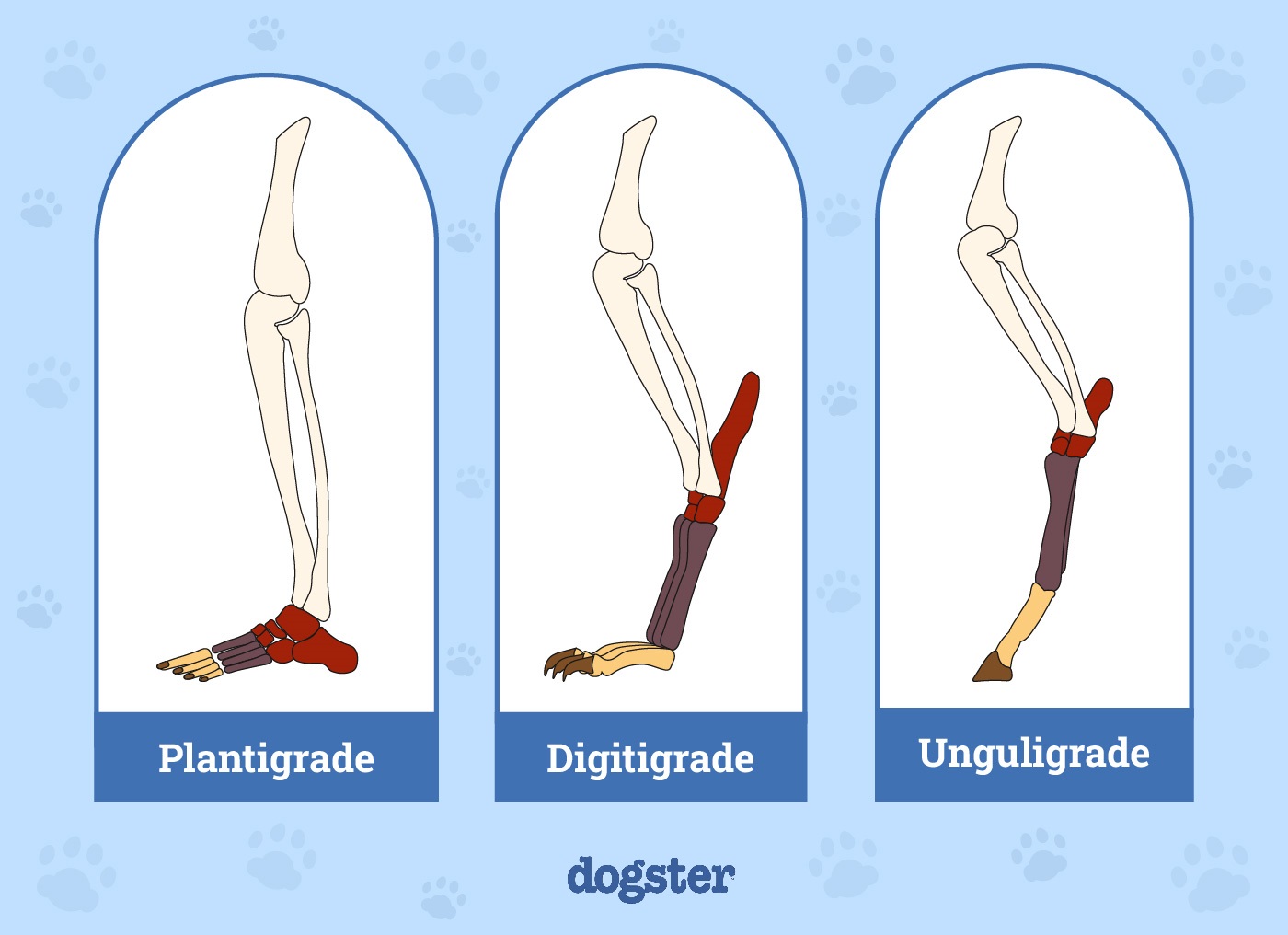In this article
Have you ever sat and watched the way your pet walks? While this may not be a common thing to do, it is something that we should understand. There are classifications for all animals that describe their mode of locomotion.
The classification used for many mammals, including dogs and cats, is digitigrade. But what exactly does that mean? To put it simply, mammals that walk digitigrade are those that walk on their toes instead of touching the ground using their heels. It’s why a dog’s leg has that distinctive hook shape.
Let’s learn more about what a digitigrade is and the science of how our pets walk.

Digitigrade Characteristics
When looking at the leg of a digitigrade animal, you’ll notice many differences compared to a human leg. The hind legs of cats and dogs are the most similar to our legs and feet. The area of their leg that would correspond with our ankle is located higher up on their leg.
When it comes to their front legs, those can be compared to our wrists and hands. This setup enables these animals to move quickly and quietly. The posture of the foot enables the heel to offer bodyweight support when running, walking, or standing. You’ll also find that many digitigrade-characterized animals have two sets of legs to make all this easier for them.

The Advantages & Disadvantages of Being Digitigrade
Being a digitigrade animal helps our pets when it comes to movement. It enables them to move quieter than other animals. This is ideal when they are hunting and need to sneak up on prey. This way of walking also gives them extra speed when it comes to catching prey or escaping a possible predator. While the pets living in our homes may not need to hunt for their food, there are dogs, cats, and birds in the wild that use this extra spring in their step to ensure that they and the animals that they live with get meals and stay protected.
When it comes to dogs and cats, being digitigrade is mostly an advantage. However, there are also bipedal digitigrade animals, like chickens and ostriches. These animals can also be quiet and move quickly, but they aren’t the most stable on their feet, which makes them quite easy to knock over. In a play situation, this can be comical. However, for animals in the wild, this can be seen as a weakness. Animals of prey can use this to their advantage by making it more difficult for these types of animals to survive in certain situations.


Conclusion
When looking at the science of how pets walk, how their legs are designed plays a major role in all aspects of their lives. For digitigrade animals, the advantage of having an extra spring in the step, stealth, and quickness is undeniable. The next time you see your pet walking through the house, take a moment to watch their movements, and revel in the uniqueness of your animal and how science has ensured that they have the opportunity to thrive in nature.
Featured Image: Vincent van Zalinge, Unsplash



















